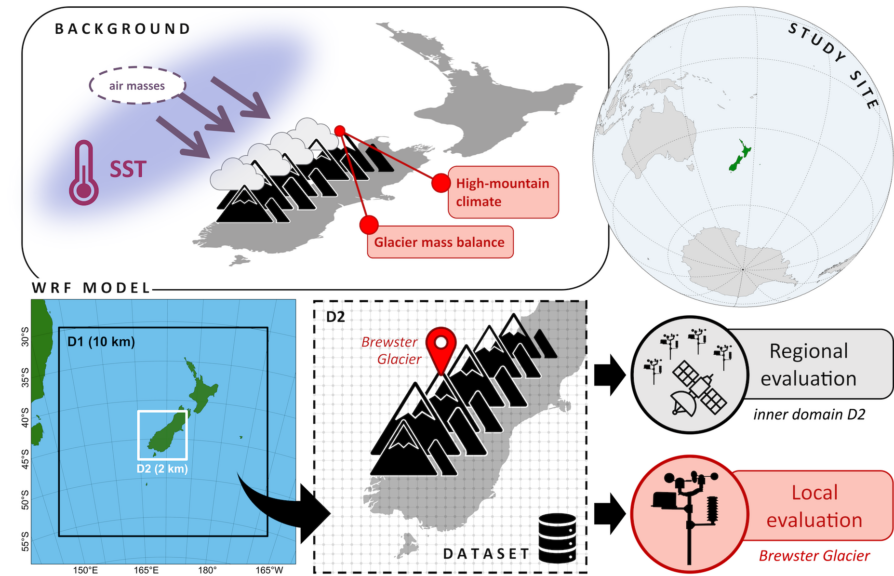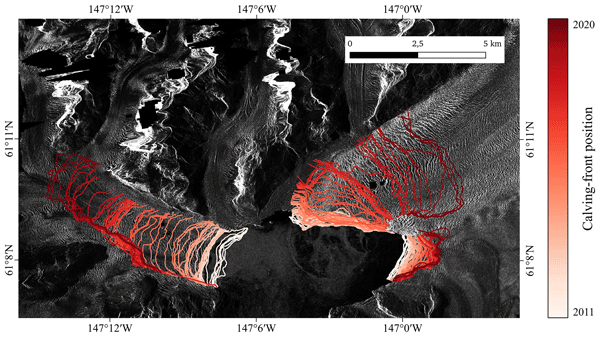A new, high-resolution atmospheric dataset for southern New Zealand, 2005–2020
The regional climate of New Zealand’s South Island is shaped by the interaction of the Southern Hemisphere westerlies with the complex orography of the Southern Alps. Due to its isolated geographical setting in the south-west Pacific, the influence of the surrounding oceans on the atmospheric circulation is strong. Therefore, variations in sea surface temperature (SST) impact various spatial and temporal scales and are statistically detectable down to temperature anomalies and glacier mass changes in the high mountains of the Southern Alps. To enable future studies on the processes that govern the link between large-scale SST and local-scale high-mountain climate, we utilized dynamical downscaling with the Weather Research and Forecasting (WRF) model to produce a regional atmospheric modelling dataset for the South Island of New Zealand over a 16-year period between 2005 and 2020. The 2 km horizontal resolution ensures realistic representation of high-mountain topography and glaciers, as well as explicit simulation of convection. The dataset is extensively evaluated against observations, including weather station and satellite data, on both regional (in the inner domain) and local (on Brewster Glacier in the Southern Alps) scales. Variability in both atmospheric water content and near-surface meteorological conditions is well captured, with minor seasonal and spatial biases. The local high-mountain climate at Brewster Glacier, where land use and topographic model settings have been optimized, yields remarkable accuracy on both monthly and daily time scales. The data provide a valuable resource to researchers from various disciplines studying the local and regional impacts of climate variability on society, economies and ecosystems in New Zealand. The model output from the highest resolution model domain is available for download in daily temporal resolution from a public repository at the German Climate Computation Center (DKRZ) in Hamburg, Germany (Kropač et al., 2023; 16-year WRF simulation for the Southern Alps of New Zealand, World Data Center for Climate (WDCC) at DKRZ [data set], https://doi.org/10.26050/WDCC/NZ-PROXY_16yrWRF).


